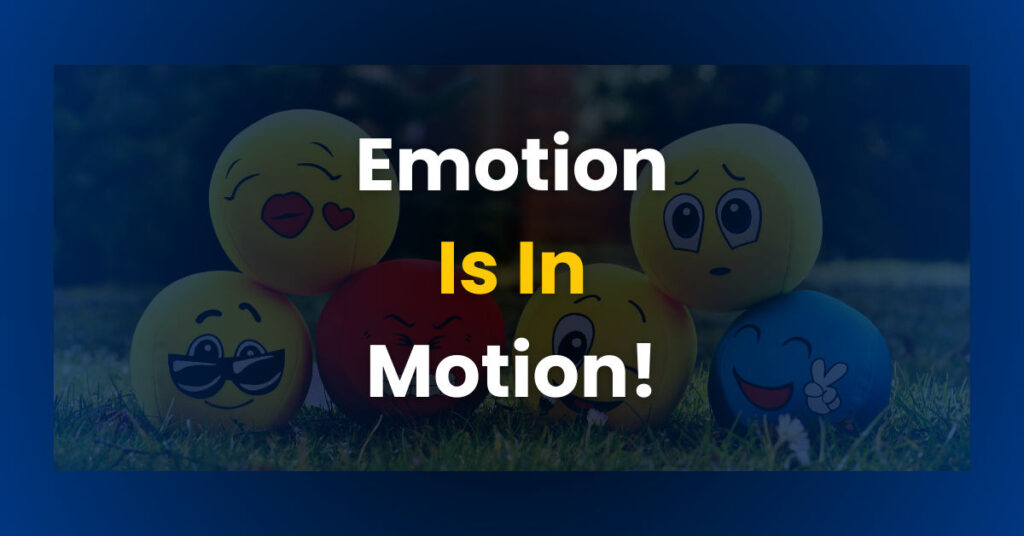How sweet, so cute, I can’t live without you!
Have you said these kinds of words to anyone? That “one” could be a person, an animal, or even an object like a vehicle.
Now you’re asking how to control emotions in love. That means you are in a relationship with a person. Am I right?
Of course, I don’t know exactly what is happening with you right now and why you want to control your emotions. But based on observation, research, and inquiry, I’ll go to share a few things with you today.
The interesting thing is that we are not going to restrict ourselves to “couple relationships” in terms of understanding. Because emotional expression of love is not restricted to a “couple relationship”.
What do you say?
Table of Contents
Ways to Control Emotions in Love; Part – 1:

Emotional imbalance in relationships is common and everybody faces it. When it comes to controlling their emotions, people use different ways and tricks. To understand them in a better way, let us divide them into two parts based on the nature, accuracy, and permanency of the solutions.
In Part 1, I’ll be discussing with you the methods to deal with comparatively easy emotions, a kind of short-cuts, and mostly temporary.
Read all methods carefully so that you can choose the one that is suitable for you.
Let’s begin;
1. Emotional Replacement:
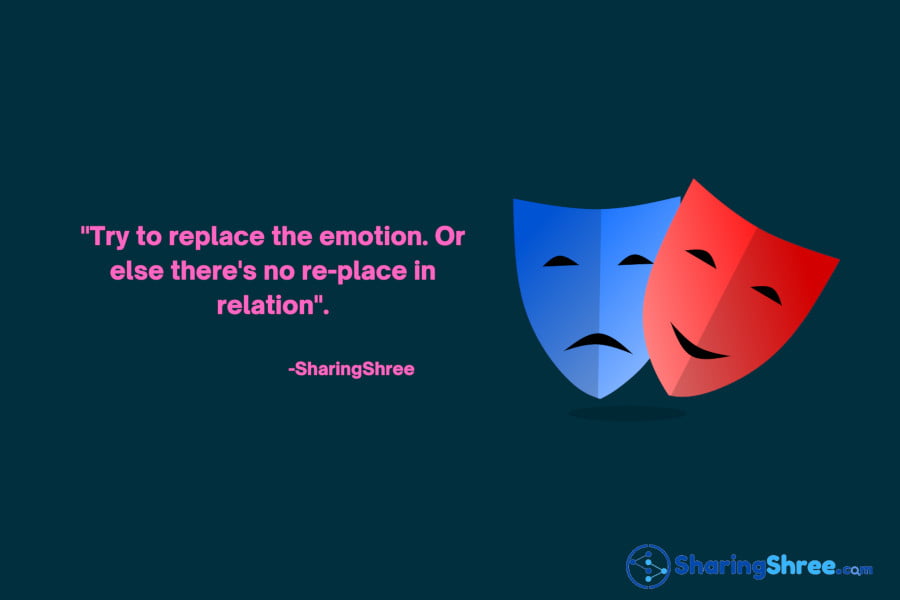
Generally, emotional control implies suppressing or replacing emotions when they arise each time.
This includes saying to oneself a few positive words such as ‘I’m strong”, “I can handle any situation”, etc. This works as if you plug in your mobile to charge when the charge level is 1% in a known shop for a while.
Reading motivational quotes, and referring to similar real stories of people are a few more things people do to manage their emotions.
Take it as an example– “Holding onto anger is like drinking poison and expecting the other person to die”- said Gauthama Budha
2. Switch The Topic According to The Priority:
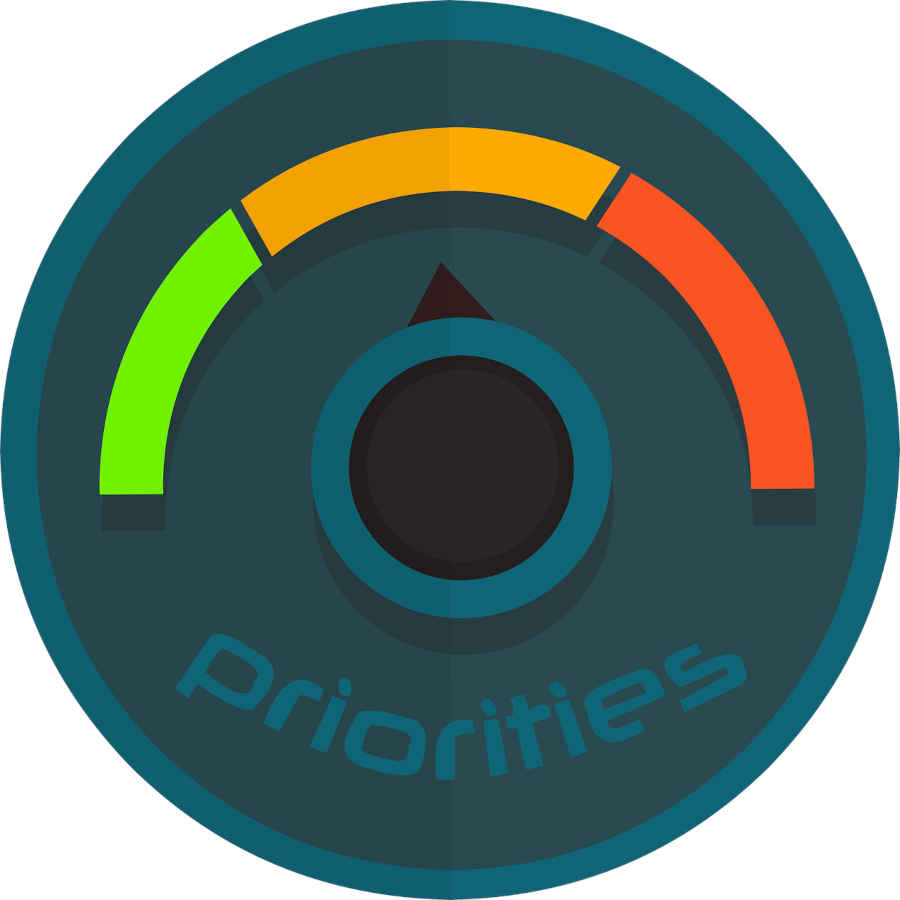
I have observed a good number of people who use this trick quite nicely.
After going through emotional fluctuations many times in a relationship you can be aware of the topics which repeatedly disturb you emotionally. Now you can prioritize based on the importance and seriousness of the topics.
This will also help you to know whether your flow of emotion towards a particular issue is worth it or not. For instance, let’s say you are caught up in an argument with the other person about he/she doesn’t wear the kind of clothes you want to see them in. Here the switching of topics depends on the importance of topics and how strongly you hold on to them.
SharingShree has posted an article on How to Solve Problems in a Relationship where you can find how to set priorities and handle other emotionally disturbing factors such as trust, expectations, etc.
3. Take a Small Break:

Sometimes even after switching topics, the problems of feelings and emotions stay there. The reason is the habit of looking at every situation with the same “problem-loaded mindset”. Knowingly or unknowingly we connect the old problems with the new and fresh ones.
in such a case, it’s better to take a small break from the issue than complicate problems through unnecessary words or actions.
Stopping conversation, and moving away for a while are a few things you can do here. This step helps in understanding the problems in a better way once you come back to it.
4. Take The Help of Entertainment:
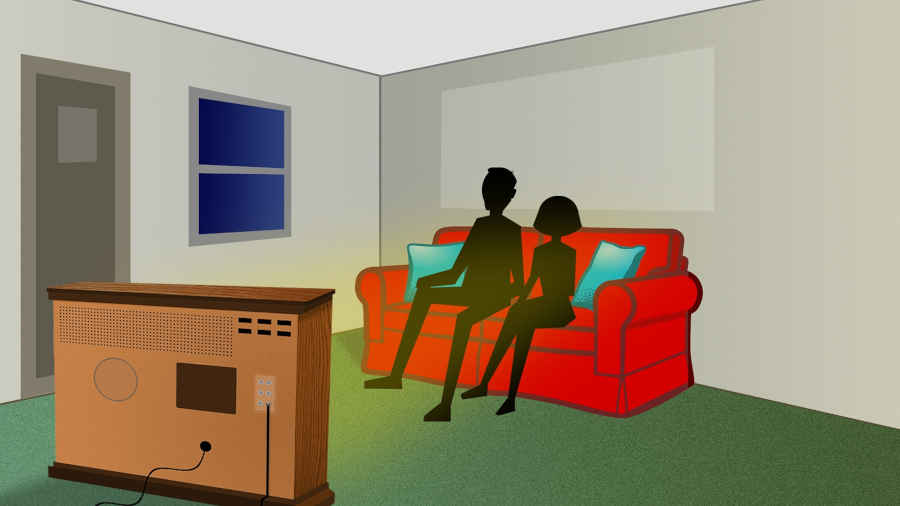
Entertainment is an easy way to change the effect of emotional imbalance. Though this method doesn’t work at the root level, you can be relaxed for a while and that relaxation will help to control emotions as they arise.
Here are a few entertainments cum learning sources;
- Watch standup comedy shows– along with making us laugh, the standup comedians help to see the same situation in multiple ways.
- Movies and Music – which may be directly related to your situation and have positive solutions or movies that make you forget the time are useful here.
- Consume genuine infotainment content – Infotainment is the combination of information and entertainment. The contents related to the managerial aspects of relationships, and the ups and downs of the Indian family system, are beneficial. Because all these are directly or indirectly related to emotional disturbance. Additionally, it also helps to understand the other person more deeply than before.
5. Share The Emotion with Friends:

Friendship is a frameless connection between two living beings. It’s also the foundation of a happy relationship.
The difficulty of controlling emotion in a relationship largely depends on how friendly the persons are. The dominating attitude, arrogance, ‘extraordinary humbleness‘ because of fear and loneliness, or complete negligence are directly connected to the level of emotional stability.
The relationship development process is also a period where most people get caught up in their feelings and emotions. In such cases, it’s worth knowing the friendship to relationship stages. Then understanding the direction and the intensity of the relationship becomes more effortless.
If the current relationship does not have a friendly foundation, it’s best to see whether it can be built. Till then you can share feelings and emotions with a person who has the quality of real friendliness. That could be your close friend, siblings, sister-in-law, parents, or a person who knows you as you know yourself (probably better than you).
6. Go for a Vacation:

Have you ever been to a place where there was a vast space?
Places such as a hill station or a beach make us feel our problems are so small in front of their vastness. At that moment the emotions are stable or automatically controlled.
We are always surrounded by the same circumstances and problems. That’s why when we are in an open space, we instantly feel good and relaxed.
If you can’t go to such places on vacation, you can try to find them nearby. That could even be the terrace or similar kinds of places.
7. Adding Some Good Habits is a Great Idea:

People do have habits such as biting their nails especially when they don’t know what to do with disturbing emotions.
This habit passes the dust from the tip of nails to the bottom of the stomach and does not help to deal with feelings and emotions
So let us not consider it a good one, what do you say?
Here, in this case, good habits are those which are beneficial in controlling or managing feelings and emotions. For instance– emotional health and the level of physical activities are directly connected. Hence, using a staircase whenever and wherever possible instead of the escalators or lifts lifting you every time is a simple and good habit.
Including a new habit in daily life seems to be difficult and we think it needs a lot of self-control. But, frontiersin.org in a research report “How to Form Good Habits? A Longitudinal Field Study on the Role of Self-Control in Habit Formation“ has said that “we did not find support for self-control capacity as a predictor of the habit formation process”.
Ways to Control Emotions in Love; Part 2:
Till now You and I have gone through a few common methods of handling emotions in love and relationship.
In Part – 2, we are going to the root of emotional disturbance. It is a long-term approach. So it requires interest, curiosity in inquiry and finding solutions, and a bit of patience.
Here instead of quickly searching for tricks to control emotions, we question the very emotion itself. What is it and why does it arise? This basic step not only helps to deal with a particular emotion but emotions that arise in any situation.
Are you excited?
What is an Emotion and How Does it Arise?
Step- 1: Perception
Perceiving the world through eyes, ears, nose, tongue, and skin.
Step- 2: Thought and Thinking
Thought is the response of the memory to what we perceive through our senses.
Step- 3: Feeling
A feeling is a subtle sensation that follows thoughts.
Step- 4: Emotion
Emotion is a movement of the life energy that follows the feeling.
Does look difficult to understand?
Don’t worry. Here is an example that will walk you through the steps again.
Explanation with Example:

You can replace the object of the example as you wish. The thing here is to notice the process.
Let us talk about a rose. Because it is an active participant in love and relationship matters. What do you say?
a. Perception:
There are three senses involved in perceiving a rose. They are the visual beauty of the rose as form and color, grasping the fragrance, and softness as a sensation of touch.
b. Thought and Thinking:
If you have observed yourself, you might have noticed that all of our actions and reactions are responses of the memory to what we perceive through our senses.
In our rose example, what happens after you perceive the rose? You may say “Wow!” either in your mind (i.e. to yourself) or through your mouth. That means when there is a response or reaction through a word, that is called a thought.
As a continuation, if you describe the rose further maybe like “how beautiful it is!“, “quite big“, or “the color could have been better”, then this chain of words is called thinking.
c. Feeling:
According to Oxford Languages,
“Feeling is an emotional state or reaction”.
If you search what is a feeling? On Google, you will find the other definitions and meanings.
Come back to our rose example. What happens after you say (think) “how beautiful it is!“? A sense of wonder, a kind of subtle cool waves, or any such subtle sensations that follow the words (thinking) you used to describe the rose are the feelings.
d. Emotion:
Emotion is nothing but energy in motion.
The energy just tweaks or boots the previous process of perception, thinking, and feeling. The intensity of emotion is subject to the intensity of those processes.
If you look at the rose and just say “Hm… looks good“, then the feelings and the level of energy are low. You may not even consider this as an emotion. On the other hand, when you say “Wow, it’s very beautiful” with a bit of excitement, the energy will be obviously high.
When you present the rose for the first time or patch up after a battle in the relationship, the emotion is different from that which arises just perceiving the rose. Laughing, crying, or being silent are the few expressions of emotions.
The Direct Way of Dealing with Emotions:
If you have considered the process mentioned above seriously, then you have already begun to deal with emotions directly. Now we need to know how it applies to love or relationship-related issues.
a. Observation:

The perception through the senses while being in a relationship is an inevitable and normal thing. So the quality of emotion depends on how you interpret a situation.
To observe whether this is true or not directly in a relationship may be difficult initially. Because the mind is already loaded with the concepts of right and wrong. In such a mindset, you can not observe clearly. That’s why I took the rose as an example to discuss with you.
Still, if you find it hard to observe emotions in your own relationship, you can begin to observe the objects as we did earlier and then come back to your problems. Because the observation demands a fresh state of mind.
Hey… Observe yourself next time when you listen to melody music/songs with your earphones/headphones on. How do you perceive the songs? are you listening to it with a silent mind? or are there colorful imaginations going on? and what were your feelings and emotions at that time?
b. Interpretation and Action:
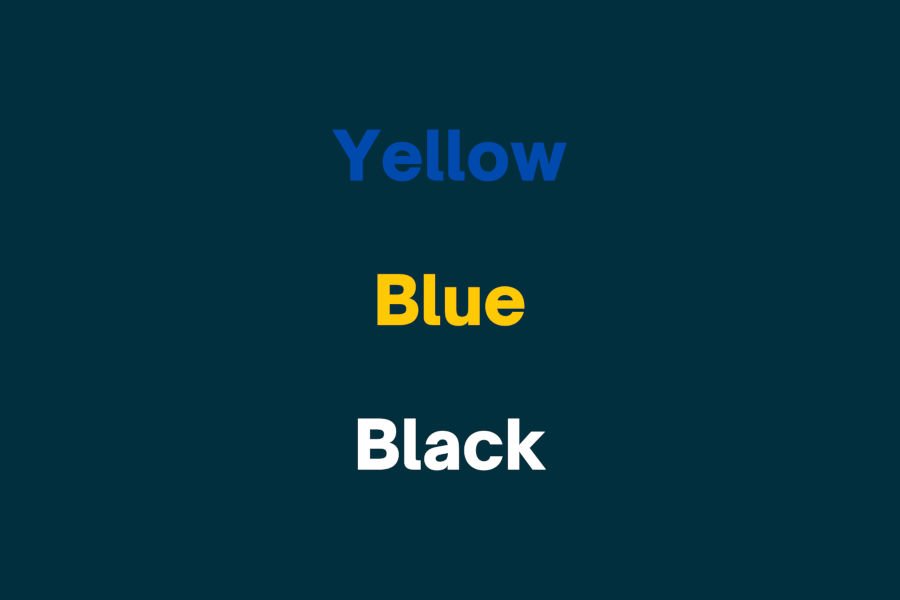
Once you begin to observe the process of raising emotion, then you will be aware of the whole movement of the emotion and its repetitive cycle.
The key point is how you interpret the perception at the level of thought. When you are aware of those responses or reactive thoughts, you can give them a proper direction.
Have you observed it just now when you read the names of the colors above? Got the point?
As a next step, action follows the thinking process. Till now the emotions were random. But now you know the reason, importance, and the whole story about it. For instance, the emotion of anger in itself may not be wrong always. When it randomly takes over us, the situation becomes worse.
At this point, you will be in a much better position to decide whether to act or not. You can also understand the limitation of language, logic, and the power of words which can both construct and district a healthy relationship. (Silence is also part of the action, use it wisely)
c. Take The Professional Help:
Though this blog post (how to control emotions in love?) is written with the good intention to help you, it’s not medical advice you can follow randomly.
If you are suffering from any serious emotional disorders, make sure you get the help of medically and legally qualified professionals who can guide you according to your particular situation.
Part- 1 Vs Part- 2:
Now you may ask me what the difference is between those methods that are mentioned in Part 1 and here in Part 2. It is not about Part 1 Vs Part 2. Still, you may or will use all of those ways mentioned in part 1 but with less baggage of pain in the mind. Here are a few key things to note;
- The direct method as mentioned in Part 2 is a long-term approach. It works at the cause level instead of changing symptoms.
- Here you not only understand yourself but also the other person more deeply. Because you are aware of the emotion-raising process which is common in everyone. Hence managing them becomes easier than before.
- Segregating silly and serious matters becomes quite easy. You can forgive the other person or yourself quickly which is mostly not possible if you try to avoid the direct method.
Conclusion:
After reading this far you might be feeling light and relaxed, don’t you? I tried to answer the question of how to control emotions in love as simply as I could.
To simplify the topic, we divided it into two parts. In Part- 1, we discussed the instinctive ways to control emotions such as emotional replacement, switching topics, adding some good habits, and so on. In Part- 2, we went to the root of emotions, what exactly are they, how they arise, and the ways to manage them properly.
You can choose the way that suits you right now and then move to the other. You are not in competition to win here. It’s a game without winning or losing but a process of learning.
Did you find it relevant and helpful? Comment below.
Share this post with your friends who are searching for ways to control their emotions.

Author and Publisher
Shreenidhi K
Hey, I’m Shreenidhi. I have created SharingShree to mutually learn and share content including experience and knowledge gathering while providing online marketing services for businesses through OnlineShree. Know More.
